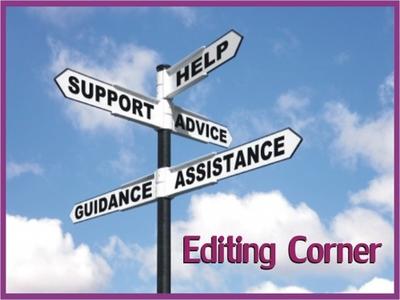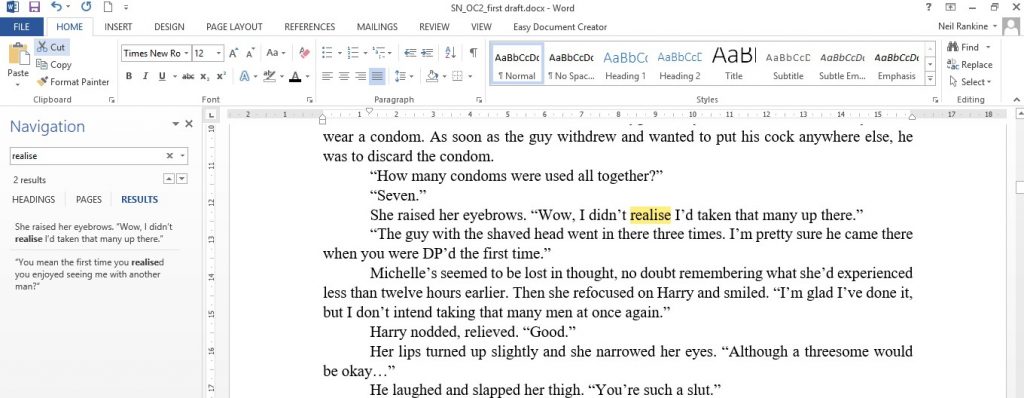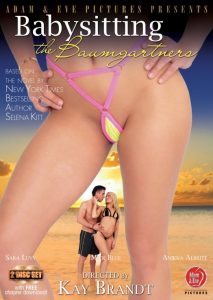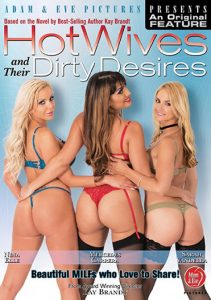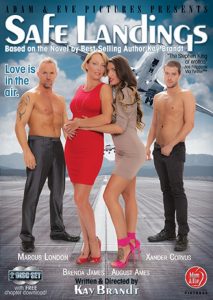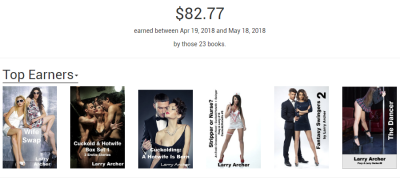Recently I got an email informing me that there was a new comment on my article entitled “Six Secrets to Writing Your Own Over-50 Shades of Erotica” which appeared on a website for women over 50 called Zest Now. “Thanks, interesting thoughts!” wrote the gentleman. I’ll take all the positive feedback I can get, even if the article had been published five years ago as part of my campaign to promote the ebook release of my novel, Amorous Woman. I only vaguely remembered what I’d written, so I revisited the site. (The link to the article doesn’t always work, so I’ve reprinted the article in its entirety below in case you’re interested in how my advice holds up.)
I stand by all six secrets and was frankly surprised at how economical the writing was—I have a tendency to ramble on when I’m talking about sex. I was also amused to remember that when I wrote that article about being inspired to write your own erotica after reading Fifty Shades of Grey, I myself had not read Fifty Shades of Grey. However, a friend I trusted had told me that reading about the relationship between Ana and Christian was very interesting to her, so I built from there.
In my defense, so much had been written about Fifty Shades, I felt I knew it well enough to use the social phenomenon as a basis for my suggestions. Also, we erotica writers had been urged to take advantage of the Fifty Shades boom to elevate our own personal brands. I wanted to be optimistic and hope that the bestselling trilogy would whet the appetites of new erotica readers who might then seek out the types of anthologies where my work was published. Could the Fifty Shades wave lift us all?
Five years later I have to say that Fifty Shades mostly just fucked the rest of us over.
Now I don’t have data to back me up, but my sense it that publishers are all the more disappointed when erotica anthologies or novels don’t become the next Fifty Shades. It’s rather like the film industry. The period of openness and artistic risk in the 1960s and 1970s that gave us Five Easy Pieces and Bob and Carol and Ted and Alice was destroyed by the blockbuster Jaws, which I recently watched. It hasn’t aged well.
The 1990s marked the advent of the Erotica Revolution, with presses like Cleis and magazines like Yellow Silk and Clean Sheets showing us that “nice” girls and boys could write thoughtful, steamy stories. Again, this might just be me, but the literary quality of Fifty Shades branded all erotica as a mediocre guilty pleasure for mommies. Literary erotica editor friends who’d been getting commissions from mainstream publishers suddenly found the river had run dry.
I still remain optimistic for the future of literary erotica. History shows us that cultural setbacks can be succeeded by leaps forward. In the meantime, I stand by my words of yore: “Whether you’re aiming to publish or please a special audience of one, writing erotica helps you focus on pleasure, which is guaranteed to improve your sensual life–even if it’s already very good indeed.”
Six Secrets to Writing Your Own Over-50 Shades of Erotica
(Zest Now, June 3, 2013)
Fifty Shades of Grey by E.L. James, who will turn 50 this year, has shown that the world loves a sexy story. Reading erotica is a great way to spark your libido, but have you ever thought of writing your own? As a 51-year-old wife and mother who’s been publishing erotica for over 15 years, I can confirm that there’s nothing more sexually empowering than putting your own steamy story down on paper. Whether you’re aiming to publish or please a special audience of one, writing erotica helps you focus on pleasure, which is guaranteed to improve your sensual life–even if it’s already very good indeed.
Here are six secrets for bringing your unique erotic stories to life:
Find A Safe Space. Although our generation came of age during the Sexual Revolution, most of us still hesitate to express our positive sexual desires. Find a safe space, both physical and mental, to create your world of pleasure. Close the door against the voices that urge you to feel shame for feeling good. In this protected place, you are free to get in touch with your fantasies, memories, images and scenes that turn you on. Suddenly everything is possible.
The Pleasures of Research. Erotic writers transform sensual experience into vivid words and images, but it takes practice. First, read some erotic books to learn what you like in style and content. Which stories do you wish you’d written? Which scenes turn you on and why? The assignment gets better. The next time you make love to your partner or yourself pay close attention with all of your senses. Where is his skin the softest? When does the sound of his breathing change? Slow down, enjoy each sensation. Try out a new position you have in mind for your story to get the logistics right. Homework has never felt so good.
Start Slow and Let It Flow. Start slow with a sketch of a sex scene or a list of scenarios that turn you on. Erotic stories can be about real experiences, but they are just as often about fantasies, dreams, forbidden desires. Let the thoughts and images flow. Experiment and discover. You’ll surprise yourself with the magic you create.
The Real Secret to Good Erotica. Dirty words only take you so far. The real secret to a compelling erotic tale is the relationship between the lovers. Critics panned Fifty Shades of Grey, but the characters’ deep feelings for each other enchanted millions. Write about a couple you care about, their desires and conflicts and how they overcome them to be together, and your reader will be right there in bed with you. As older women, we bring a wealth of life experience to the writing process. Use your wisdom!
Share It With Your Lover. I’ve published over 150 stories, but my greatest joy is still that gleam in my husband’s eye after he’s read my latest story. A story is also a great way to suggest a new bedroom activity or introduce a fantasy. Use your judgment as some partners can be uncomfortable. If you think your partner might be open to it, start out gently, with a sketch of what you enjoy doing with him, rather than, for example, a hard-core BDSM scene.
Share It With the World. Today it’s easier than ever to share your work with a wider readership. Post your story on Literotica for appreciation and feedback. Self-publishing on Amazon is another popular option. For more traditional validation by professional editors, check out the Erotica Readers and Writers Association Calls for Submissions. Remember all writers face a lot of rejection, so keep trying!
Midlife brings a flowering of confidence and creativity for women. Writing erotica is a rewarding way to renew your passion as well.


